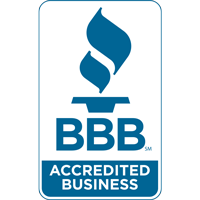
Ceiling fans are one of the most underappreciated ways to increase home comfort and reduce energy costs. By improving air circulation and working in conjunction with your HVAC system, ceiling fans and energy efficiency are truly a natural pairing. They offer a practical, energy-efficient way to keep cool while lessening strain on your AC—even preventing unnecessary air conditioning repair.
In this blog, the experts at Antonelli Comfort Solutions discuss how ceiling fans can make your home feel more comfortable while increasing your HVAC efficiency. We'll also offer some HVAC efficiency tips that make the most of ceiling fans.
Comfort vs. Temperature: Staying Cool Using the Wind-Chill Effect Indoors
Ceiling fans don’t actually cool the air—they cool you down by increasing air movement across your skin. This is referred to as the wind-chill effect, and it can make a room feel up to 4 degrees cooler without adjusting the thermostat. That means you feel less hot and enjoy the benefits of indoor air circulation from your ceiling fan while relying less on your air conditioner—helping reduce your electric bill in summer.
The Best of Both: Why You Should Use Fans and Air Conditioning Together
There are several upsides to using ceiling fans and air conditioning at the same time, especially on hotter days. By using both, you boost HVAC efficiency and keep your home cooler with less work from your cooling system.
Benefits of using ceiling fans and AC together:
- Ceiling fans help lower HVAC load by circulating cool air more evenly throughout the room. Decreasing HVAC stress is important, because it can prevent a breakdown that could result in premature AC or furnace installation.
- Using ceiling fans enhances comfort by eliminating hot spots and enhancing circulation.
- Pairing ceiling fans and AC can reduce overall energy use. If you have a home automation system, you can even modify your smart thermostat settings to increase the temperature slightly while your ceiling fan is running.
Clockwise vs. Counterclockwise Ceiling Fan Rotation: Which Direction Should a Fan Spin?
To get the most out of your ceiling fans year-round, it’s important to ensure blades are rotating in the proper direction for the season. The direction impacts how air circulates, which can either make you feel cooler or push warm air downward so you feel warmer.
When to spin ceiling fans counterclockwise
On hot days, ceiling fans should spin counterclockwise at a faster setting. This creates a breeze that pushes cool air downward, enhancing the wind-chill effect and making you feel cooler.
When it's best to spin ceiling fans clockwise
When it's cold out, set your fan to rotate clockwise on a low speed. This softly moves cold air up and circulates heated air down to where you can feel it, helping you feel warmer without touching your thermostat.
Things to Look for in a Ceiling Fan
Picking the right ceiling fan depends on a few key factors, including blade design, airflow rating and room dimensions. First, look for fans that offer a good blend of ECFM airflow and blade pitch to provide efficient air movement in your home:
- ECFM is how much air a fan circulates—the cubic feet per minute, or CFM—per watt of electricity consumed. Fans with higher ECFM are more energy efficient.
- Blade pitch is the tilt of the blades. A sharper blade pitch increases airflow but can also strain the motor.
Also, consider room size when sizing a ceiling fan—a fan that’s too small won’t circulate sufficient air, while one that’s too big may be disruptive in a smaller room.
Boost Your HVAC Efficiency With the Team from Antonelli Comfort Solutions
At Antonelli Comfort Solutions, our HVAC specialists can help you maintain a cozy home while minimizing wear on your heating and cooling systems. From efficient ceiling fan strategies and air conditioning installation to smart thermostats and furnace repair, we offer comprehensive solutions that work with your budget. Reserve your appointment by calling 252-424-6803 today.




